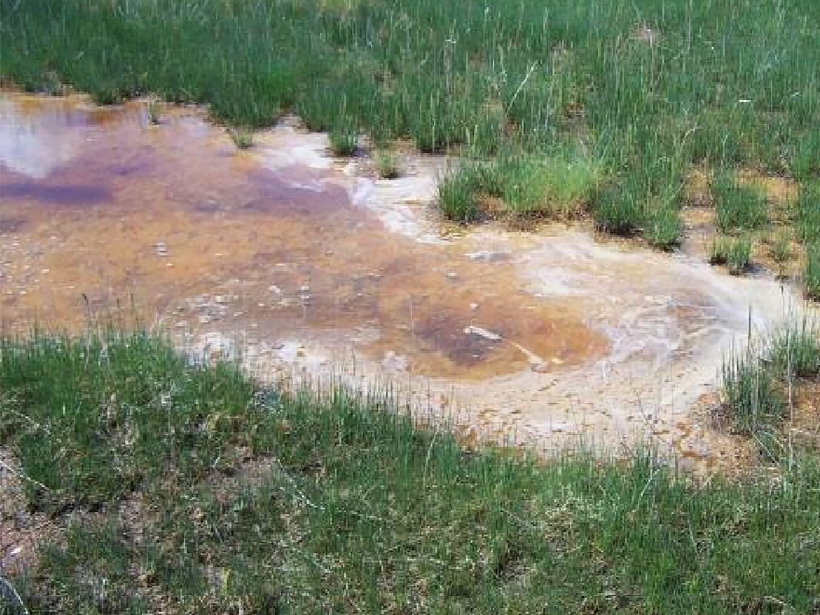Tar sands miners must, by law, restore those lost wetlands.
Companies that mine the oil-rich tar sands of Alberta, Canada, often destroy marshy peatlands known to strongly absorb climate-changing carbon when their salinity is right. The miners must, by law, restore those lost wetlands, but no one knows what factors control the salinity of a peatland or the optimum salinity level for carbon storage. Now researchers report a counterintuitive effect of rainfall on peatland salinity that might offer a way to fine-tune the salt concentrations of restored peatlands to maximize carbon absorption.
To investigate peatland salinity, a research team led by Olena Volik of the University of Waterloo in Waterloo, Ontario, took sediment cores from a naturally occurring peatland pond about as salty as the ocean, located in a wilderness about 10 kilometers south of Fort McMurray, Alberta. Peatlands are a type of wetland with vegetation built up on a thick layer of peat, a mixture of dead and decaying plants and other organic material. Tiny organisms in the soils of peat bogs and marshes known as diatoms, which are a type of algae, live at specific salinities and can be used to estimate past salinity levels. The researchers studied the types and distribution of diatoms inside the sediment cores to learn how the peatland’s past salinity varied over time and to discover what drove those changes.
Rain’s Surprising Effect
They found, unsurprisingly, that the amount of precipitation governed how saline the peatland was. However, the rainwater’s effect on saltiness ran contrary to expectations. Whereas more precipitation would usually mean salinity would decrease because of the influx of fresh water and vice versa, the salinity of the peatland rose with increasing rainfall, and when precipitation rates declined, the salinity dipped along with them.
Volik and her colleagues reported their findings at the American Geophysical Union’s 2015 Fall Meeting on Monday, 13 December.
They discovered the reason for the contrary effect in the groundwater beneath the peatland pond they were studying. Underneath that pond the groundwater itself was salty—a condition Volik said was likely elsewhere in Alberta as well. When rain falls, the water table rises and brings that saline groundwater up into the pond. When little rain falls, the water table lowers, so the groundwater and its salinity don’t make it up to the pond’s level.
Future Tar Sand Reclamation
She hopes her findings will help dictate how the destroyed peatlands are reclaimed following tar sand mining.
Volk told Eos that she hopes her findings will help dictate how the destroyed peatlands are reclaimed following tar sand mining so the most is made of their ability to soak up carbon. “That’s why we need to construct peatlands, to sequester carbon,” she said.
Knowing how peatland salinity works, land managers could use artificial irrigation to adjust marsh salt content, Volik suggested. What’s more, she added, should future research determine salinity levels for maximum peatland carbon storage, those could inform regulations for wetland reclamation.
—Cody Sullivan, Writer Intern
Citation: Sullivan, C. (2015), Salty secret might aid carbon impact of restored wetlands, Eos, 96, doi:10.1029/2015EO041773. Published on 15 December 2015.
Text © 2015. The authors. CC BY-NC 3.0
Except where otherwise noted, images are subject to copyright. Any reuse without express permission from the copyright owner is prohibited.

